我們將其稱為“高管棉花糖測試”:新冠疫情期間,,在恢復(fù)正常生產(chǎn)的訴求避無可避之前,一名商業(yè)領(lǐng)袖能夠讓其機構(gòu)按照應(yīng)急預(yù)案運轉(zhuǎn)多長的時間,?盡管全球新冠肺炎病例曲線正趨于平緩(然而避免其擴散所帶來的經(jīng)濟痛楚已經(jīng)超過了人們所能理解的范圍),,但提前重啟商業(yè)的風(fēng)險卻依然大到難以讓人接受。換句話說,,在這個疫情后的重啟聚會中,,沒有一個人愿意率先亮相。我們只需從歷史中尋找答案,。1918年,,西班牙流感感染了全球三分之一的人口,其大多數(shù)死亡病例都源于“第二波”感染,,當(dāng)時,,一戰(zhàn)中軍隊的移動妨礙了各國通過取消家庭活動來規(guī)避該疾病的舉措。因此,,企業(yè)應(yīng)如何在眼下這個時期重啟業(yè)務(wù),?我們采訪了不同行業(yè)《財富》美國500強企業(yè)的首席執(zhí)行官,請他們分享自己對公司未來動向的看法,。所有人都建議謹(jǐn)慎對待,。很多高管都利用這段時間來專注于業(yè)務(wù)的基本面問題,少數(shù)人則在這個人類的生死存亡之際看到了一絲機會。如需了解詳情,,請閱讀下文,。
福特首席執(zhí)行官韓愷特:循序漸進。
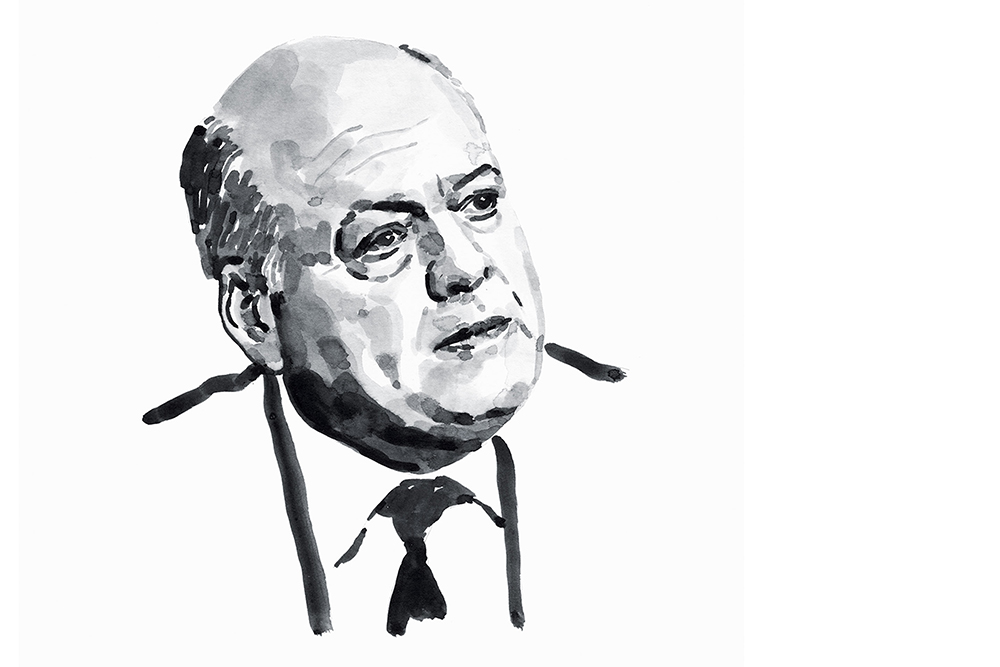
我們對當(dāng)前形勢的看法是,,人們將看到一個V形的曲線,。不過這一點倒是仁者見仁,因此我們在盡一切努力保護更多的工作崗位,。我們降低了公司高管層的薪資,。所有這一切的目的是讓所有人回歸工作。我認(rèn)為我們將采取循序漸進的舉措,。公司的其中一個工廠擁有7000人,,不可能讓他們在一天之內(nèi)都返回工廠,并高效地工作,。因此我們必須分次讓他們返工,。我們需要讓經(jīng)濟的運轉(zhuǎn)以需求為導(dǎo)向。因此,,我們對政府的人說,,如果你們可以在疫情結(jié)束時制定一些鼓勵政策,則會造福整個行業(yè),?!蛱K希·加里布講述
Gap首席執(zhí)行官索尼婭·辛格爾:利用這段時間來重新思考未來,。

當(dāng)新冠疫情來臨之時,,我們發(fā)現(xiàn)公司的線上業(yè)務(wù)出現(xiàn)了顯著提升。對于我們來說,,這場危機存在的機會在于使用公司的全渠道能力來幫助店面團隊迅速做好對公眾開放的準(zhǔn)備,,以及按照在線需求來管理庫存。與此同時,,我們正在與店面業(yè)主進行積極的溝通,。我們提出了一個戰(zhàn)略要求:4月因為公共健康命令而關(guān)閉的店面將不支付租金。我們還使用這段時間來思考我們應(yīng)該如何呈現(xiàn)公司的各個品牌,。我們已經(jīng)針對店面宣布了一系列安全舉措,。在這個新世界中,所有人都應(yīng)該相互負(fù)責(zé),,而且公司也有義務(wù)提供一個安全的零售環(huán)境,。政府的工作是宣傳這一舉措,并加以實施,。銷售趨勢會是怎么樣的?美國人衣著的休閑化和對運動裝的專注在疫情期間不斷升溫。無論環(huán)境如何變化,,孩子和嬰兒則在繼續(xù)成長,。據(jù)我所知,人們天天早上都會穿衣服,。這是一種需求,。——向王波非講述
來德愛(Rite Aid)首席執(zhí)行官海沃德·唐尼根:接受新常態(tài),。
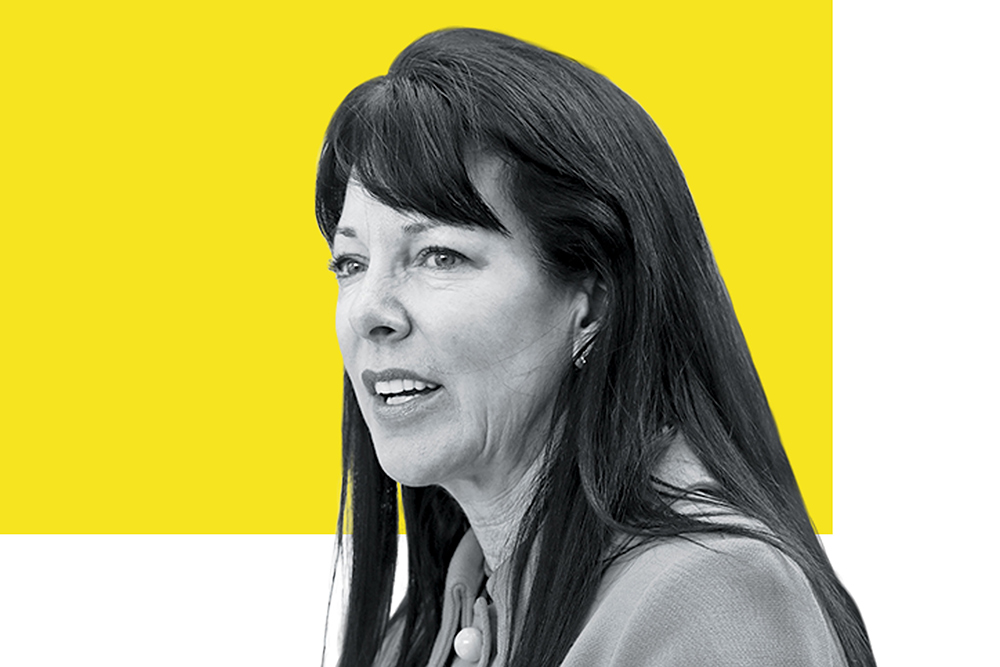
整個世界自2001年9月11號之后便再也沒有常態(tài)可言,,而且我們?nèi)缃褚矡o法回歸以前的常態(tài)。我們將重新思考公司的供應(yīng)鏈,。我們不會允許自身再次出現(xiàn)手套,、口罩或洗手液短缺的情況。我們將擁有廣泛,、多元化的免疫增強藥品供應(yīng)鏈,,例如維生素D和維生素C。我們的市場份額也有所增加,,通常,,當(dāng)你的市場份額增加之后,你就得想辦法去維持這個份額,?!虬敗ば疗胬蛑v述
希爾頓全球集團首席執(zhí)行官克里斯托弗·納塞塔:警惕新一輪疫情的到來。
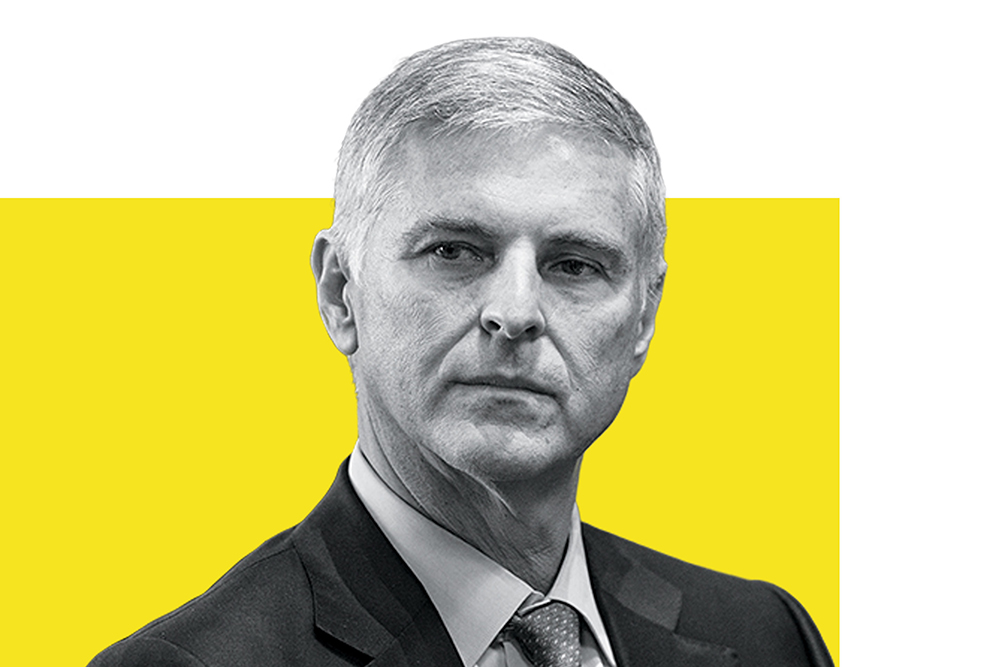
在我看來,,人們渴望回歸以往的常態(tài),,但卻擔(dān)憂病毒的繼續(xù)擴散,這兩者之間的沖突才是最大的障礙,。消除這一障礙的最佳方式在于,,通過提供穩(wěn)健的測試和加強控制,讓人們能夠放心,、安全地去四處走動,。隨著我們對易感人群認(rèn)知的不斷深化,我們需要盡一切努力來保護他們,?!蚶住が斏喷髦v述
高通首席執(zhí)行官史蒂夫·莫倫科普夫
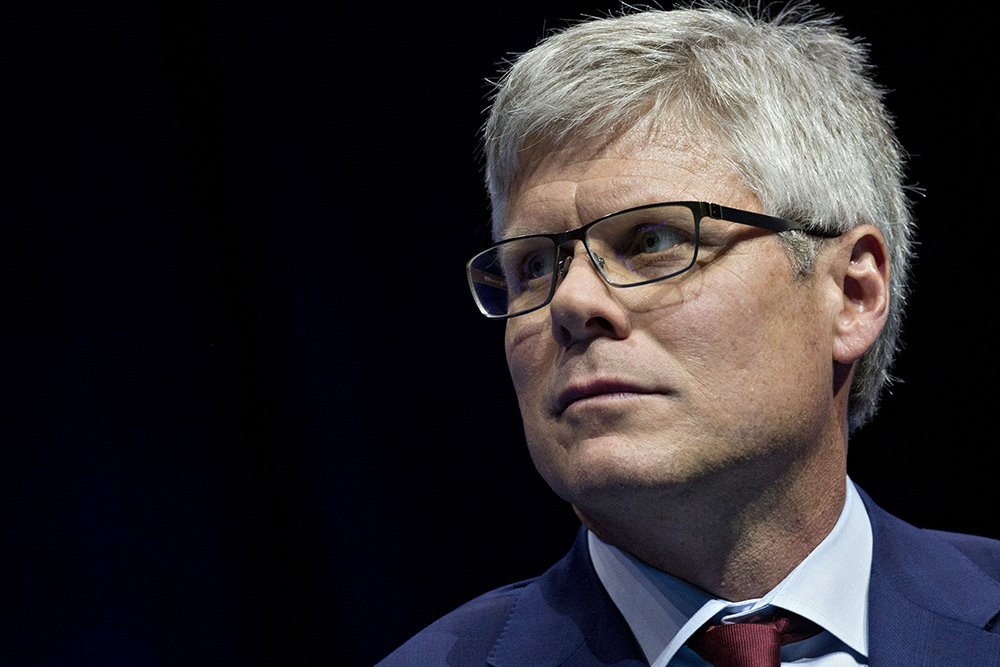
我對公司適應(yīng)新工作環(huán)境的速度感到震驚不已。部分原因在于我們已經(jīng)配備了能夠?qū)崿F(xiàn)這種工作方式的設(shè)施,。我認(rèn)為,,如果10年前[幾乎所有人就能遠程工作],那么這個行業(yè)將分崩離析,?!蚶杩蓑v講述
杜克能源首席執(zhí)行官琳恩·古德:記住自己的要務(wù),。
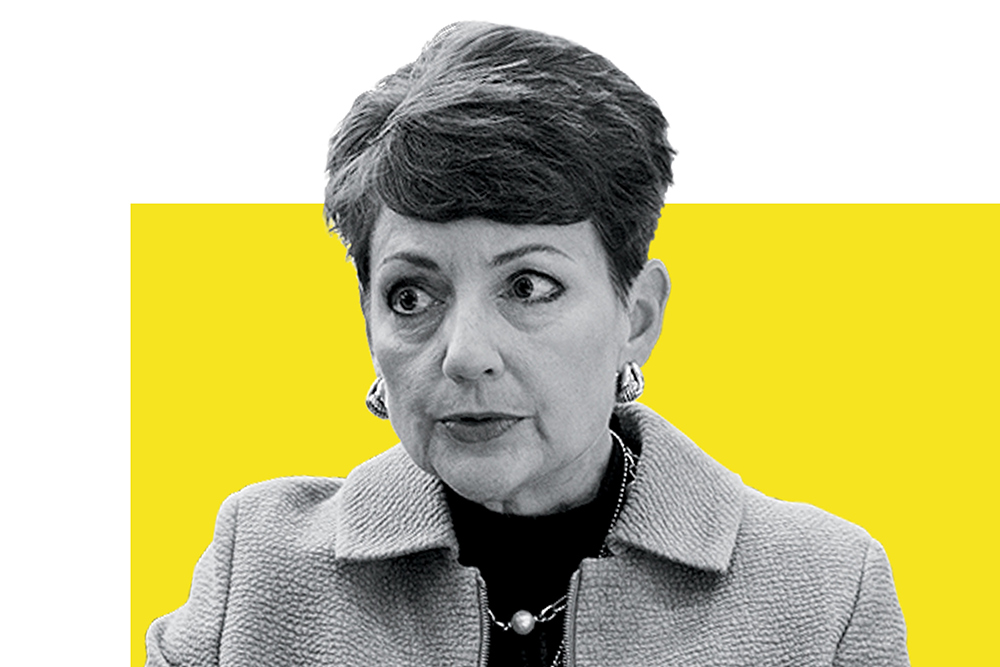
當(dāng)人們身處這類危機之中時,他們會迅速明確自己的重點工作:照顧好你的客戶和雇員,。確保你能夠為他們提供所需的重要服務(wù),。除此之外,思考一下更長遠的局勢和結(jié)果:例如財務(wù)業(yè)績或政策變化,。隨著我們繼續(xù)向前邁進,,我們得應(yīng)對更長遠的經(jīng)濟影響。我們深知向投資者提供確定性的重要性,?!蛱K希·加里布講述
金融服務(wù)公司Synchrony瑪格麗特·基恩:跟著錢走,。
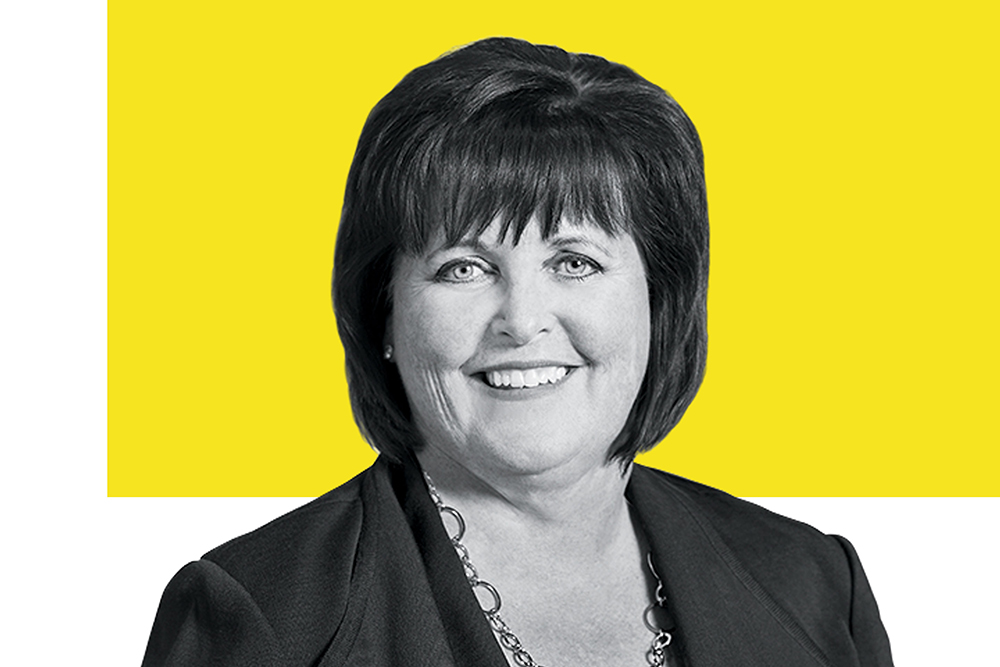
人們正在花錢,。我認(rèn)為真正的考驗在于,失業(yè)會持續(xù)多長的時間,?是否會出現(xiàn)反彈,?令我感到擔(dān)憂而且夜不能寐的是,大量的小企業(yè)都關(guān)門了,。我的確認(rèn)為我們得開始讓企業(yè)重新營業(yè),,從而讓人們回歸工作崗位。對于我們來說,,關(guān)鍵之處取決于人們拿到薪水,、回歸工作的快慢?!蛱K?!ぜ永锊贾v述
達美航空首席執(zhí)行官艾德·巴斯蒂安:為更加崎嶇的未來做好準(zhǔn)備。
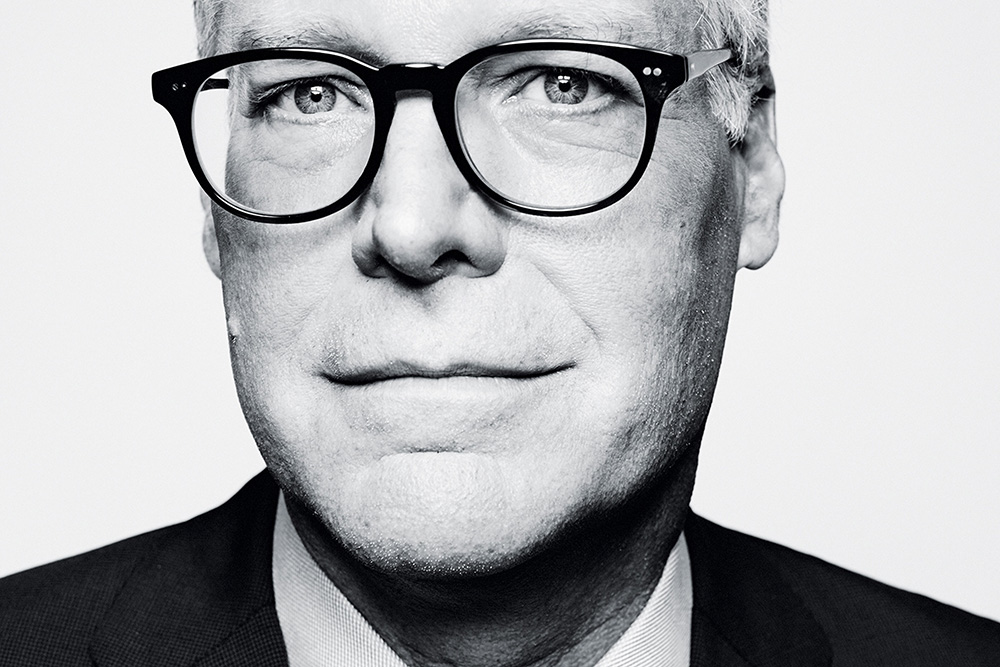
商業(yè)如今在最低谷徘徊,,繼續(xù)下探的幅度已經(jīng)不大,。這是個好消息。我們必須重塑旅行公眾的信心,,并向他們灌輸一種信念:旅行是安全的,。我們對整個客戶體驗進行了重新思考,實施了所有能夠?qū)嵤┑纳缃皇桦x舉措,,并改變了整個登機流程,,因為對于坐在前排的人士來說,有人從其身邊經(jīng)過是不安全的,,因此我們讓最后排的乘客先登機,。我們還限制了載荷,如今主機艙的上座率不得超過60%,,頭等艙不得超過50%,。我們還會進行消毒,,我們的清潔得分如今飛速上漲。我們還利用這個機會重新思考了未來的業(yè)務(wù)模式,。我們不一定就得回歸昔日的輝煌,。我們正在節(jié)約現(xiàn)金,以度過這個可能會持續(xù)兩年的寒冬,。我們會通過維持我們的財務(wù)靈活度和構(gòu)建龐大的儲備金來順利度過這個難關(guān)?!蛱K?!ぜ永锊贾v述
百時美施貴寶公司首席執(zhí)行官喬瓦尼·卡福里奧:說到就要做到,不要光說不做,。
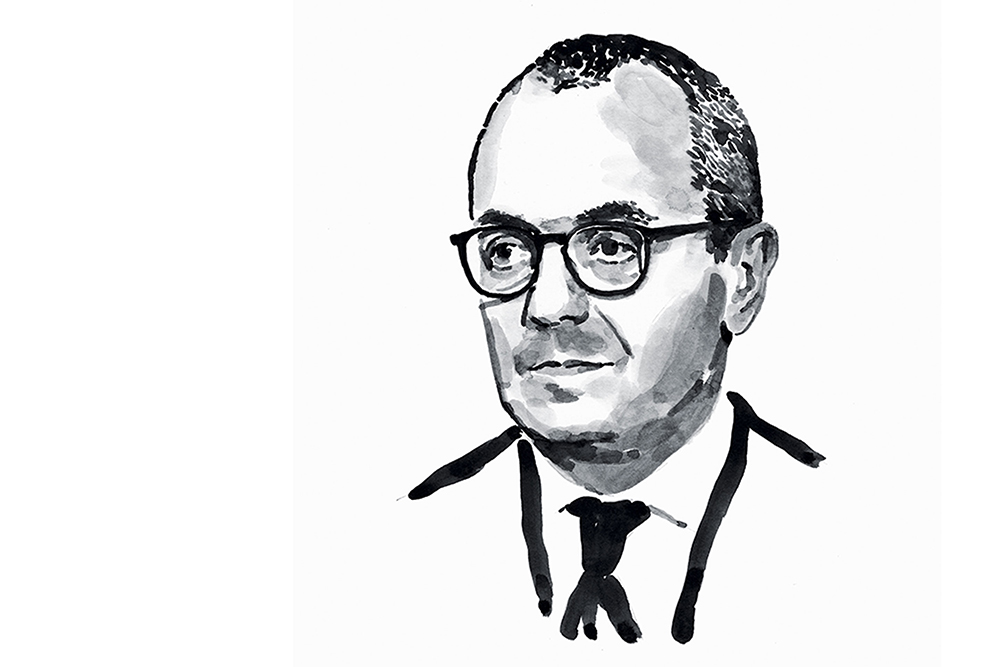
回歸正常生活是一個循序漸進的過程,。我們得摸著石頭過河。我們可能會看到,,重啟社交和經(jīng)濟會導(dǎo)致感染病例的增加,。我們已經(jīng)教育我們的員工如何辨識新冠病毒感染后的跡象和癥狀,以便讓員工匯報疑似癥狀,。我們已經(jīng)設(shè)立了一套機制,,以便讓相關(guān)員工能夠得到檢測。我們還有能力跟蹤這名員工可能在工廠接觸過的其他人,,以便向那些接觸過這名患者的人發(fā)出警告,。這個策略非常成功,因為我們可以讓需要到廠的員工能夠安全,、健康地工作,。——向賽·穆克賀吉講述
星巴克首席執(zhí)行官凱文·約翰遜:利用到目前為止所學(xué)到的一切內(nèi)容,。
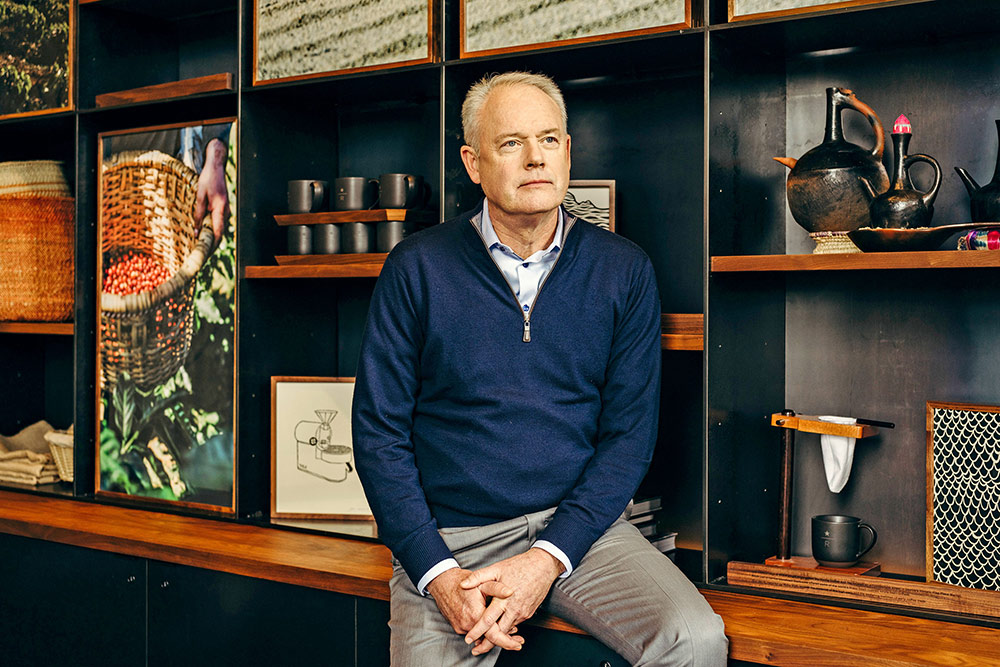
通過向公司的中國店面學(xué)習(xí),,我們在2月底就開始采取漸進的舉措來控制病毒的傳播。如今,,公司的美國業(yè)務(wù)正在向“監(jiān)控與適應(yīng)”階段轉(zhuǎn)型,。我們在重新經(jīng)營時會遵循安全規(guī)范和改良后的模式。我們通過告訴客戶站立的位置和限制店里客戶的數(shù)量來踐行社交隔離,,同時為合作伙伴提供保護裝備,,面向可預(yù)見的未來維持升級后的消毒流程,并向客戶推廣低接觸渠道,。我們的應(yīng)用將針對路邊取餐,、入口處遞送、更好的汽車駛?cè)肴〔秃蚐iri語音訂餐進行優(yōu)化,。我們將提供更多的無現(xiàn)金體驗,,并預(yù)測我們的移動應(yīng)用將成為主流支付形式,。我們相信,這些影響只是暫時的,,因為中國市場的持續(xù)恢復(fù)便是很好的例證,。我們認(rèn)為,我們采取的這些專注舉措將有助于重塑公司美國業(yè)務(wù)的上揚態(tài)勢,?!蚶浊袪枴そ鹬v述
科爾百貨首席執(zhí)行官米歇爾·嘉斯:努力給客戶留下好印象……
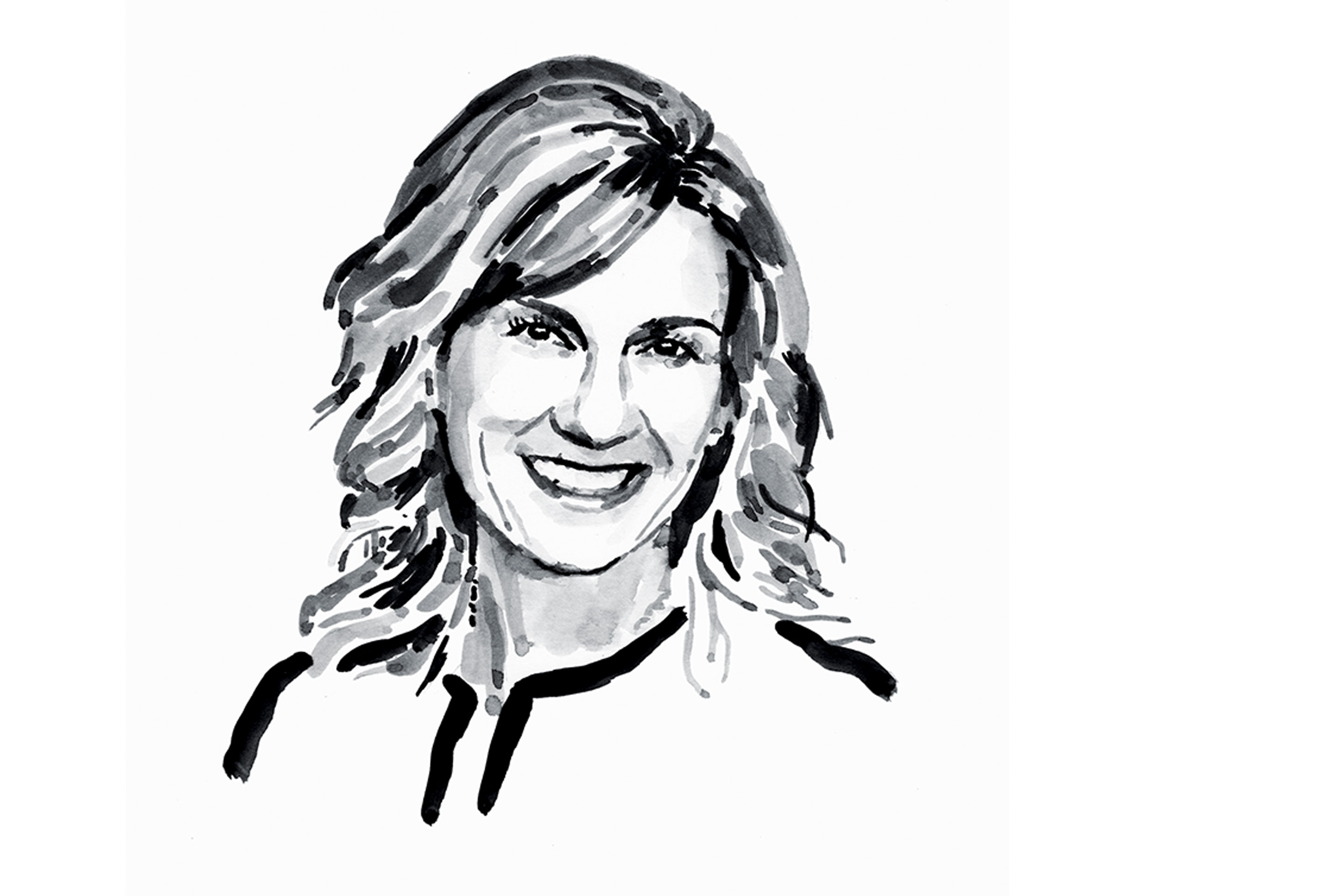
我們需要客戶適應(yīng)這個新常態(tài)。盡管店面處于關(guān)閉狀態(tài),,但我們一直能夠與其保持良好的關(guān)系,。對于回歸常態(tài),我們深知客戶已經(jīng)做好了準(zhǔn)備,,而且感到十分興奮,。公司要做的頭等大事就是歡迎他們回來,但沒有人知道具體時間,,而且也沒有人經(jīng)歷過這類全球性的疫情,。對于我們來說就是回歸我們的核心準(zhǔn)則。我們并不是大賣場,。這里進出都很方便,,有寬敞的店面,此前我們吸引了有著明確目的的客戶(逛商店是為了購買特定的物品),。所有這一切充分體現(xiàn)了我們的實力,。——向王波非講述
富國銀行首席執(zhí)行官查爾斯·沙夫:……然而要量力而行,。
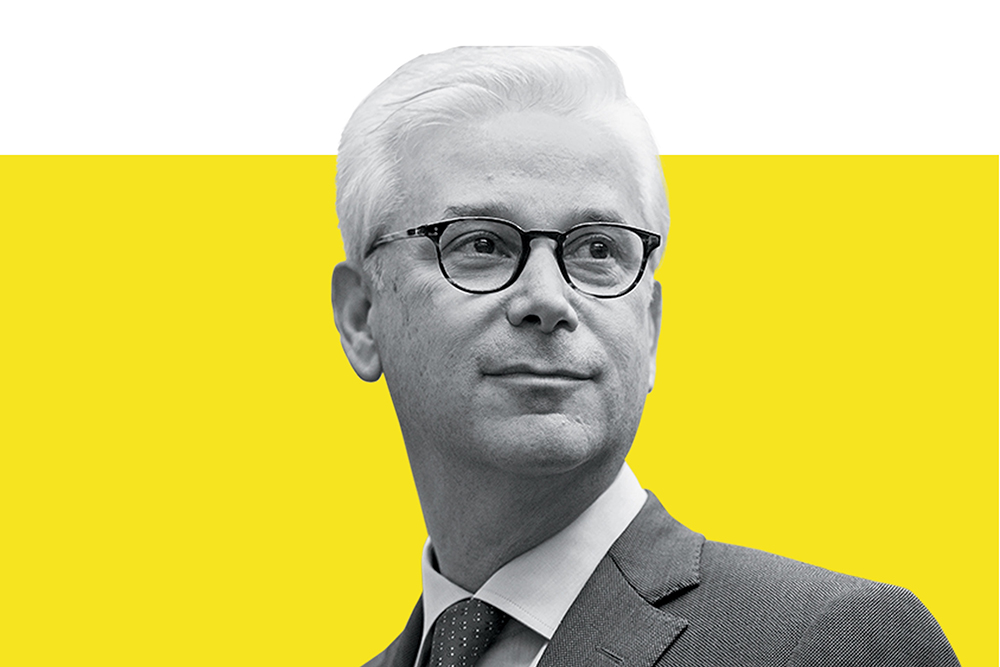
重啟經(jīng)濟是件重要的事情,,但在這一過程中應(yīng)該采取一種能夠保護公眾健康的方式。我們應(yīng)該提醒自己,,疫情并未過去,。我們看到的改善得益于我們?yōu)榱丝刂撇《緜鞑ザ扇〉拇胧H绻覀冊跊]有采取適當(dāng)?shù)目刂拼胧┲氨慊貧w之前的生活,,我們可能會看到疫情的反復(fù),。我深知在富國銀行,盡管我們開始策劃讓員工逐步永久地返回辦公室,,但我們也將對整個過程進行周密的部署,。——向雷·瑪莎雅琪講述
梅西百貨首席執(zhí)行官杰夫·根內(nèi)特:發(fā)揮你的優(yōu)勢,。
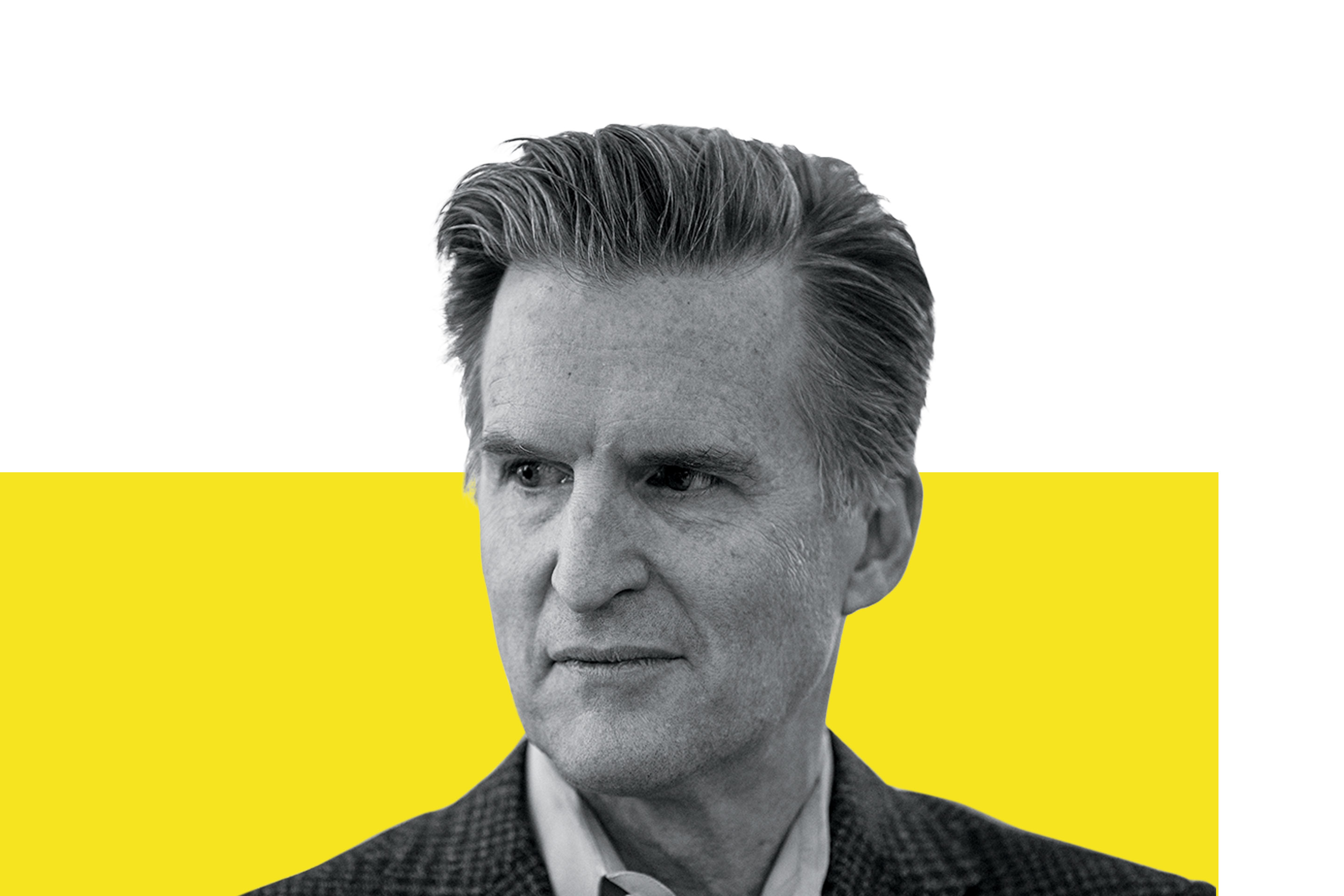
展望2020年和2021年,,我們將削減我們的開支。不過可以肯定的是,,我們將加大對數(shù)字業(yè)務(wù)的投入,。盡管如此,,實體店面依然會發(fā)揮重要的作用。當(dāng)疫情過去之后,,人們依然還是會去實體店,。客戶希望獲得更好的體驗和品牌,。數(shù)字領(lǐng)域也存在同樣的機遇,。我們將變得更緊湊,而且我們也將提升公司的杠桿率,。不過,,我們找到了前進的道路?!蛲醪ǚ侵v述
思科首席執(zhí)行官羅卓克
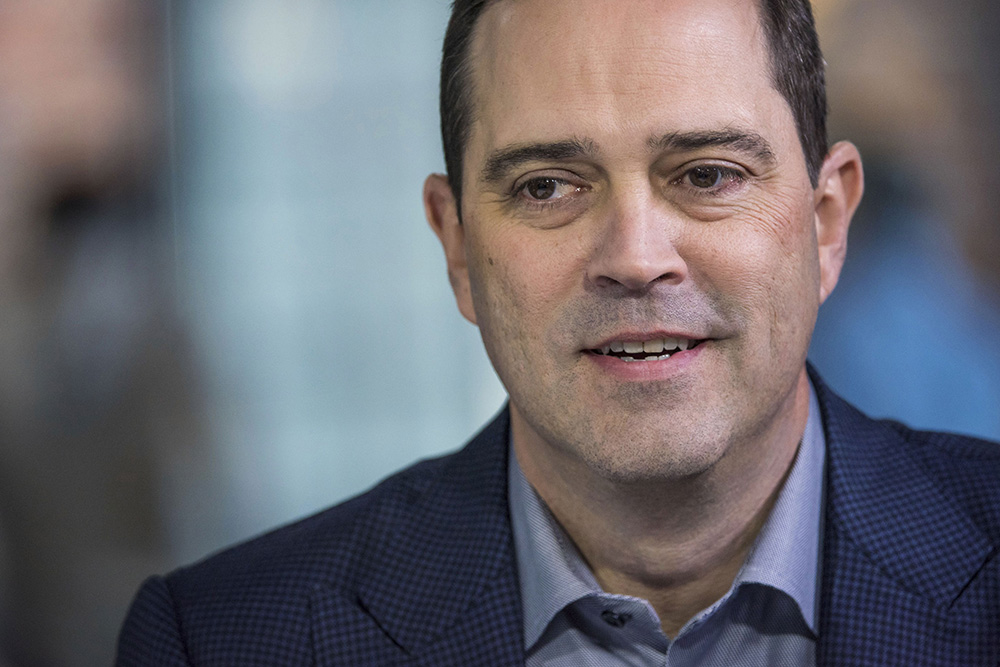
我的同事曾經(jīng)說過:“如果你在1月告訴我,95%的員工將在家辦公,,而且公司的運營會像以前一樣順暢,,我絕不會相信?!比缃?,我們意識到這是完全可能的,這種典范式的轉(zhuǎn)變將被保留下來,?!蚶杩蓑v講述(財富中文網(wǎng))
本文另一版本登載于《財富》雜志2020年6/7月刊,標(biāo)題為《如何重新營業(yè)》,。
譯者:Feb
我們將其稱為“高管棉花糖測試”:新冠疫情期間,,在恢復(fù)正常生產(chǎn)的訴求避無可避之前,一名商業(yè)領(lǐng)袖能夠讓其機構(gòu)按照應(yīng)急預(yù)案運轉(zhuǎn)多長的時間,?盡管全球新冠肺炎病例曲線正趨于平緩(然而避免其擴散所帶來的經(jīng)濟痛楚已經(jīng)超過了人們所能理解的范圍),,但提前重啟商業(yè)的風(fēng)險卻依然大到難以讓人接受。換句話說,,在這個疫情后的重啟聚會中,,沒有一個人愿意率先亮相。我們只需從歷史中尋找答案,。1918年,,西班牙流感感染了全球三分之一的人口,其大多數(shù)死亡病例都源于“第二波”感染,,當(dāng)時,,一戰(zhàn)中軍隊的移動妨礙了各國通過取消家庭活動來規(guī)避該疾病的舉措。因此,,企業(yè)應(yīng)如何在眼下這個時期重啟業(yè)務(wù),?我們采訪了不同行業(yè)《財富》美國500強企業(yè)的首席執(zhí)行官,,請他們分享自己對公司未來動向的看法。所有人都建議謹(jǐn)慎對待,。很多高管都利用這段時間來專注于業(yè)務(wù)的基本面問題,,少數(shù)人則在這個人類的生死存亡之際看到了一絲機會。如需了解詳情,,請閱讀下文,。
福特首席執(zhí)行官韓愷特:循序漸進。
我們對當(dāng)前形勢的看法是,,人們將看到一個V形的曲線,。不過這一點倒是仁者見仁,因此我們在盡一切努力保護更多的工作崗位,。我們降低了公司高管層的薪資,。所有這一切的目的是讓所有人回歸工作。我認(rèn)為我們將采取循序漸進的舉措,。公司的其中一個工廠擁有7000人,,不可能讓他們在一天之內(nèi)都返回工廠,并高效地工作,。因此我們必須分次讓他們返工,。我們需要讓經(jīng)濟的運轉(zhuǎn)以需求為導(dǎo)向。因此,,我們對政府的人說,,如果你們可以在疫情結(jié)束時制定一些鼓勵政策,則會造福整個行業(yè),?!蛱K希·加里布講述
Gap首席執(zhí)行官索尼婭·辛格爾:利用這段時間來重新思考未來,。
當(dāng)新冠疫情來臨之時,,我們發(fā)現(xiàn)公司的線上業(yè)務(wù)出現(xiàn)了顯著提升。對于我們來說,,這場危機存在的機會在于使用公司的全渠道能力來幫助店面團隊迅速做好對公眾開放的準(zhǔn)備,,以及按照在線需求來管理庫存。與此同時,,我們正在與店面業(yè)主進行積極的溝通,。我們提出了一個戰(zhàn)略要求:4月因為公共健康命令而關(guān)閉的店面將不支付租金。我們還使用這段時間來思考我們應(yīng)該如何呈現(xiàn)公司的各個品牌,。我們已經(jīng)針對店面宣布了一系列安全舉措,。在這個新世界中,所有人都應(yīng)該相互負(fù)責(zé),而且公司也有義務(wù)提供一個安全的零售環(huán)境,。政府的工作是宣傳這一舉措,,并加以實施。銷售趨勢會是怎么樣的,?美國人衣著的休閑化和對運動裝的專注在疫情期間不斷升溫,。無論環(huán)境如何變化,孩子和嬰兒則在繼續(xù)成長,。據(jù)我所知,,人們天天早上都會穿衣服。這是一種需求,?!蛲醪ǚ侵v述
來德愛(Rite Aid)首席執(zhí)行官海沃德·唐尼根:接受新常態(tài)。
整個世界自2001年9月11號之后便再也沒有常態(tài)可言,,而且我們?nèi)缃褚矡o法回歸以前的常態(tài),。我們將重新思考公司的供應(yīng)鏈。我們不會允許自身再次出現(xiàn)手套,、口罩或洗手液短缺的情況,。我們將擁有廣泛、多元化的免疫增強藥品供應(yīng)鏈,,例如維生素D和維生素C。我們的市場份額也有所增加,,通常,,當(dāng)你的市場份額增加之后,你就得想辦法去維持這個份額,?!虬敗ば疗胬蛑v述
希爾頓全球集團首席執(zhí)行官克里斯托弗·納塞塔:警惕新一輪疫情的到來。
在我看來,,人們渴望回歸以往的常態(tài),,但卻擔(dān)憂病毒的繼續(xù)擴散,這兩者之間的沖突才是最大的障礙,。消除這一障礙的最佳方式在于,,通過提供穩(wěn)健的測試和加強控制,讓人們能夠放心,、安全地去四處走動,。隨著我們對易感人群認(rèn)知的不斷深化,我們需要盡一切努力來保護他們,?!蚶住が斏喷髦v述
高通首席執(zhí)行官史蒂夫·莫倫科普夫
我對公司適應(yīng)新工作環(huán)境的速度感到震驚不已。部分原因在于我們已經(jīng)配備了能夠?qū)崿F(xiàn)這種工作方式的設(shè)施。我認(rèn)為,,如果10年前[幾乎所有人就能遠程工作],,那么這個行業(yè)將分崩離析?!蚶杩蓑v講述
杜克能源首席執(zhí)行官琳恩·古德:記住自己的要務(wù),。
當(dāng)人們身處這類危機之中時,他們會迅速明確自己的重點工作:照顧好你的客戶和雇員,。確保你能夠為他們提供所需的重要服務(wù),。除此之外,思考一下更長遠的局勢和結(jié)果:例如財務(wù)業(yè)績或政策變化,。隨著我們繼續(xù)向前邁進,,我們得應(yīng)對更長遠的經(jīng)濟影響。我們深知向投資者提供確定性的重要性,?!蛱K希·加里布講述
金融服務(wù)公司Synchrony瑪格麗特·基恩:跟著錢走,。
人們正在花錢,。我認(rèn)為真正的考驗在于,失業(yè)會持續(xù)多長的時間,?是否會出現(xiàn)反彈,?令我感到擔(dān)憂而且夜不能寐的是,大量的小企業(yè)都關(guān)門了,。我的確認(rèn)為我們得開始讓企業(yè)重新營業(yè),,從而讓人們回歸工作崗位。對于我們來說,,關(guān)鍵之處取決于人們拿到薪水,、回歸工作的快慢?!蛱K?!ぜ永锊贾v述
達美航空首席執(zhí)行官艾德·巴斯蒂安:為更加崎嶇的未來做好準(zhǔn)備。
商業(yè)如今在最低谷徘徊,,繼續(xù)下探的幅度已經(jīng)不大,。這是個好消息。我們必須重塑旅行公眾的信心,,并向他們灌輸一種信念:旅行是安全的,。我們對整個客戶體驗進行了重新思考,實施了所有能夠?qū)嵤┑纳缃皇桦x舉措,,并改變了整個登機流程,,因為對于坐在前排的人士來說,有人從其身邊經(jīng)過是不安全的,因此我們讓最后排的乘客先登機,。我們還限制了載荷,,如今主機艙的上座率不得超過60%,頭等艙不得超過50%,。我們還會進行消毒,,我們的清潔得分如今飛速上漲。我們還利用這個機會重新思考了未來的業(yè)務(wù)模式,。我們不一定就得回歸昔日的輝煌,。我們正在節(jié)約現(xiàn)金,以度過這個可能會持續(xù)兩年的寒冬,。我們會通過維持我們的財務(wù)靈活度和構(gòu)建龐大的儲備金來順利度過這個難關(guān),。——向蘇?!ぜ永锊贾v述
百時美施貴寶公司首席執(zhí)行官喬瓦尼·卡福里奧:說到就要做到,,不要光說不做。
回歸正常生活是一個循序漸進的過程,。我們得摸著石頭過河,。我們可能會看到,重啟社交和經(jīng)濟會導(dǎo)致感染病例的增加,。我們已經(jīng)教育我們的員工如何辨識新冠病毒感染后的跡象和癥狀,,以便讓員工匯報疑似癥狀。我們已經(jīng)設(shè)立了一套機制,,以便讓相關(guān)員工能夠得到檢測,。我們還有能力跟蹤這名員工可能在工廠接觸過的其他人,以便向那些接觸過這名患者的人發(fā)出警告,。這個策略非常成功,,因為我們可以讓需要到廠的員工能夠安全,、健康地工作,。——向賽·穆克賀吉講述
星巴克首席執(zhí)行官凱文·約翰遜:利用到目前為止所學(xué)到的一切內(nèi)容,。
通過向公司的中國店面學(xué)習(xí),,我們在2月底就開始采取漸進的舉措來控制病毒的傳播。如今,,公司的美國業(yè)務(wù)正在向“監(jiān)控與適應(yīng)”階段轉(zhuǎn)型,。我們在重新經(jīng)營時會遵循安全規(guī)范和改良后的模式。我們通過告訴客戶站立的位置和限制店里客戶的數(shù)量來踐行社交隔離,,同時為合作伙伴提供保護裝備,,面向可預(yù)見的未來維持升級后的消毒流程,并向客戶推廣低接觸渠道。我們的應(yīng)用將針對路邊取餐,、入口處遞送,、更好的汽車駛?cè)肴〔秃蚐iri語音訂餐進行優(yōu)化。我們將提供更多的無現(xiàn)金體驗,,并預(yù)測我們的移動應(yīng)用將成為主流支付形式,。我們相信,這些影響只是暫時的,,因為中國市場的持續(xù)恢復(fù)便是很好的例證,。我們認(rèn)為,我們采取的這些專注舉措將有助于重塑公司美國業(yè)務(wù)的上揚態(tài)勢,?!蚶浊袪枴そ鹬v述
科爾百貨首席執(zhí)行官米歇爾·嘉斯:努力給客戶留下好印象……
我們需要客戶適應(yīng)這個新常態(tài)。盡管店面處于關(guān)閉狀態(tài),,但我們一直能夠與其保持良好的關(guān)系,。對于回歸常態(tài),我們深知客戶已經(jīng)做好了準(zhǔn)備,,而且感到十分興奮,。公司要做的頭等大事就是歡迎他們回來,但沒有人知道具體時間,,而且也沒有人經(jīng)歷過這類全球性的疫情,。對于我們來說就是回歸我們的核心準(zhǔn)則。我們并不是大賣場,。這里進出都很方便,,有寬敞的店面,此前我們吸引了有著明確目的的客戶(逛商店是為了購買特定的物品),。所有這一切充分體現(xiàn)了我們的實力,。——向王波非講述
富國銀行首席執(zhí)行官查爾斯·沙夫:……然而要量力而行,。
重啟經(jīng)濟是件重要的事情,,但在這一過程中應(yīng)該采取一種能夠保護公眾健康的方式。我們應(yīng)該提醒自己,,疫情并未過去,。我們看到的改善得益于我們?yōu)榱丝刂撇《緜鞑ザ扇〉拇胧H绻覀冊跊]有采取適當(dāng)?shù)目刂拼胧┲氨慊貧w之前的生活,,我們可能會看到疫情的反復(fù),。我深知在富國銀行,盡管我們開始策劃讓員工逐步永久地返回辦公室,,但我們也將對整個過程進行周密的部署,?!蚶住が斏喷髦v述
梅西百貨首席執(zhí)行官杰夫·根內(nèi)特:發(fā)揮你的優(yōu)勢。
展望2020年和2021年,,我們將削減我們的開支,。不過可以肯定的是,我們將加大對數(shù)字業(yè)務(wù)的投入,。盡管如此,,實體店面依然會發(fā)揮重要的作用。當(dāng)疫情過去之后,,人們依然還是會去實體店,。客戶希望獲得更好的體驗和品牌,。數(shù)字領(lǐng)域也存在同樣的機遇,。我們將變得更緊湊,而且我們也將提升公司的杠桿率,。不過,,我們找到了前進的道路?!蛲醪ǚ侵v述
思科首席執(zhí)行官羅卓克
我的同事曾經(jīng)說過:“如果你在1月告訴我,,95%的員工將在家辦公,而且公司的運營會像以前一樣順暢,,我絕不會相信,。”如今,,我們意識到這是完全可能的,,這種典范式的轉(zhuǎn)變將被保留下來?!蚶杩蓑v講述(財富中文網(wǎng))
本文另一版本登載于《財富》雜志2020年6/7月刊,,標(biāo)題為《如何重新營業(yè)》。
譯者:Feb
Call it a marshmallow test for executives: During the novel coronavirus pandemic, how long can a business leader keep his or her organization functioning under emergency protocols before the urge to resume normal operations becomes too great to ignore? Though the curve of global COVID-19 cases is flattening (and the economic pain of mitigating its spread beyond comprehension), the risks of prematurely reopening for business are too great to entertain. That is to say: No one wants to show up early to the post-pandemic party. We need only let history be our guide. Most deaths from the 1918 Spanish flu, which infected about a third of the world’s population, arose from a “second wave” of infections, when troop movements during World War I undermined nations’ efforts to mitigate the disease by shuttering activity at home. So how to reopen for business this time around? We asked 14 Fortune 500 CEOs in an array of industries to share how they’re thinking about next steps. All of them advocate caution. Many are using the moment to focus on fundamentals. And a few see a glimmer of opportunity at an otherwise dreadful moment for humanity. To learn more, read on.
Jim Hackett, CEO, Ford
Take it one step at a time.
Our mindset going into this was that we were going to see a V-shaped curve. That is up for intellectual debate, so we tried to protect as many jobs as we could. At the top of the company, we took pay reductions. The idea is to get everyone back to work. I suspect we’ll have a stepped approach. One of our factories has 7,000 people in it; they can’t all show up at the door one day and expect to be productive. So we have to turn it on in waves. We need the economy to respond from a demand perspective. So we’re talking to people in government and saying, If you could create some incentives at the end of this, that would be helpful to the whole industry. —As told to Susie Gharib
Sonia Syngal, CEO, Gap
Use this moment to rethink the future.
When covid-19 hit, we saw a meaningful acceleration in our online business. For us, the opportunity of this crisis is using our omnichannel capabilities to help store teams quickly prepare to open to the public as well as manage inventory against online demand. In the meantime, we are in active discussions with our landlords. It was a strategic call to not pay rent in April for stores closed by public health orders. We’re also using this as a moment to think about what we want our fleet to look like. We’ve announced a series of safety measures for our stores. In this new world, everybody has a responsibility to each other, and we have a responsibility to provide a safe retail environment. The government’s job is to advocate for that and to enable that. As for sales trends? The casualization of how Americans are dressing and the focus on activewear have accelerated in the COVID-19 crisis. And kids and babies continue to grow in any environment. Last time I checked, people put on clothes every morning. It’s a need. —As told to Phil Wahba
Heyward Donigan, CEO, Rite Aid
Accept the new normal.
The world never went back to normal after Sept. 11, 2001, and we won’t go back to the old normal now. We’re rethinking our supply chain. We are not going to allow ourselves to ever be in short supply of gloves, masks, or hand sanitizer. We will have a broad and diverse supply chain for immunity boosters, like vitamin D and vitamin C. We’ve picked up market share in grocery, too, and generally when you pick up market share, you keep it. —As told to Emma Hinchliffe
Christopher Nassetta, CEO, Hilton Worldwide
Be wary of a new wave.
The biggest obstacle I’m seeing is the tension between a desire to get back to our old routines and concern about the continued spread of the virus. The best way to address it is to build confidence that consumers can move about safely by offering robust testing and doubling down on containment. As we gain a greater understanding of those who are most vulnerable, we need to do everything we can to protect them. —As told to Rey Mashayekhi
Steve Mollenkopf, CEO, Qualcomm
It’s amazing how quickly our organization adapted to a new working environment. Part of it is that we had already been instrumented to be able to do something like that. I think if we had [nearly everyone working remotely] 10 years ago, the industry would have fallen apart.—As told to Clifton Leaf
Lynn Good, CEO, Duke Energy
Remember what’s important.
When you’re in the midst of a crisis like this, priorities become clear very quickly: Take care of your customers and employees. Make sure you provide essential services they need. Beyond that, think about scenarios and outcomes over the longer term: financial results, for example, or policy changes. As we go forward, we will respond to longer-term economic impacts. We understand the importance of delivering certainty to our investors. —As told to S.G.
Margaret Keane, Synchrony
Follow the money.
People are spending. I think the real test is going to be, How long are people going to be out of work? Do we see a bounce back? What worries me—what I lose sleep at night about—is that there are an enormous number of small businesses out there that are shut. I do think we have to start opening businesses up to get people back working. For us, the factor is really going to be how quickly people can get a paycheck and get back to work. —As told to S.G.
Ed Bastian, CEO, Delta Air Lines
Prepare for more turbulence.
Business is bouncing along the bottom right now. There’s not much lower we can go. That’s the good news. We’ve got to rebuild and instill confidence in the traveling public that it’s safe to travel again. We’re rethinking the entire customer experience. We’re implementing all the social distancing measures you can take. We’ve changed the entire boarding process—it’s not safe for the people in front to have people parading past them, so we’re now boarding from the back of the plane. We cap load factors—we will not board a plane that’s more than 60% full in the main cabin or 50% full in first class. We’re sanitizing—our cleaning scores are through the ceiling. We’re taking the opportunity to rethink what the business will look like in the future. We’re not necessarily going to build back what we had. We’re saving cash to get through a difficult winter and maybe two years of difficulty. We’ll see it through by preserving our financial flexibility and building up a pretty big nest egg. —As told to S.G.
Giovanni Caforio, CEO, Bristol-Myers Squibb
Walk the walk, don’t just talk the talk.
Returning to normal life is going to happen in stages. We are going to have to learn as we go. It is possible that the reopening of society and the economy will result in an increase in the number of infections. We have educated our workforce to recognize signs and symptoms of the disease when there is an employee reporting symptoms of concern. We have a mechanism for that employee to be tested, and we also have the ability to track the contacts that that person may have had in a plant to alert the people who may have been in contact with them. That strategy has been very successful because we’ve been able to enable our people that we need to be in the plant to stay safe and healthy. —As told to Sy Mukherjee
Kevin Johnson, CEO, Starbucks
Leverage what you’ve learned so far.
Learning from our stores in China, we began taking progressive steps to contain the spread of the virus in late February. Now our U.S. business is transitioning into the “monitor and adapt” phase. We are reopening stores with safety protocols and modified formats. We are promoting social distancing by directing customers where to stand and limiting the number of customers in a café, providing partners with protective equipment, maintaining elevated sanitation procedures for the foreseeable future, and promoting low-contact channels for customers. Our app will optimize for curbside pickup, entryway handoff, improved drive-thru experiences, and voice ordering through Siri. We will shift toward more cashless experiences and predict that our mobile app will become the dominant form of payment. Our belief is that these impacts are temporary, as evidenced by our continued recovery in China. We believe the focused actions we are taking will help to restore upward momentum in our U.S. business. —As told to Rachel King
Michelle Gass, CEO, Kohl’s
Put your best foot forward…
We need customers to adjust to this new normal. We’ve been able to maintain strong relationships with them while stores have been closed. We know customers are ready and excited to return. Job number one for us is to welcome them back. If you show how much you care by creating a safe and comfortable shopping experience, you can expect business to return over time. But no one exactly knows when; no one has navigated a global pandemic like this. For us, it’s getting back to our core tenets. We’re not in malls. We’re easy to come in and out of. We have spacious stores. We’ve historically attracted mission-driven customers [who go to the store for specific items]. All of this plays to our strengths. —As told to P.W.
Charles Scharf, CEO, Wells Fargo
…but don’t get ahead of yourself.
It is important that we begin to open the economy, but it needs to be done in a way that protects the public’s health. We should remind ourselves that the virus is not gone. The improvements we’ve seen are due to the measures taken to control its spread. If we go back to previous behavior without the proper controls in place, we will likely see new waves. I know that at Wells Fargo, we will be thoughtful as we begin planning for an eventual, phased return to the ?office. —As told to R.M.
Jeffrey Gennette, CEO, Macy’s
Play to your strengths.
We’re cutting back on our spend as we look at 2020 and 2021. But I can tell you what we’re going to amplify: digital. Still, there is still a huge role for stores. When we come out of this, people are still going to want to go to stores. Customers want better experiences and better brands. That is of the same order of opportunity as digital. We’re going to be smaller and we’re going to be more leveraged. But we have a path forward. —As told to P.W.
Chuck Robbins, CEO, Cisco
My peers have made comments like, “If you had told me in January that 95% of my employees would be working from home and the firm would be running as well as it is, I would never have believed it.” Now that we recognize what’s possible, that paradigm shift is going to stay with us.—As told to C.L.
A version of this article appears in the June/July 2020 issue of Fortune with the headline “How to Reopen.”






